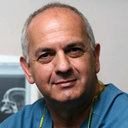High prevalence of elevated blood pressure among children with neurofibromatosis type 1.
Keywords
Abstract
BACKGROUND
Neurofibromatosis type 1 (NF1) is a common neurocutaneous disease characterized by café-au-lait spots, axillary and inguinal freckling, neurofibromas, and optic gliomas. Increased rates of hypertension (HTN) were reported among NF1 patients, however, the prevalence of HTN and pre-HTN in pediatric NF1 patients has not been clarified.
METHODS
Blood pressure (BP) measurements, weight, and renal ultrasound were assessed in 224 NF1 pediatric patients followed in a specialized NF1 clinic.
RESULTS
The cohort's mean age was 9.1 ± 4.1 years. Overweight and obesity were found in 12.9 and 10.3 % of them, respectively. BP was measured averagely 2.9 times per patient on different occasions. Blood pressure was in the pre-HTN and HTN ranges in 14.9 and 16.9 % of measurements, respectively. BP >95th was detected in 20.5 % at the first measurement. Of 114 children with at least three BP measurements, 18.4 % had two values in the HTN range and 6.14 % had at least three. Overweight was not associated with HTN among children with NF1. Urinary tract ultrasonographic abnormalities were detected in 6.8 % (11/161) of cases.
CONCLUSIONS
The prevalence of increased BP in pediatric NF1 is much higher than in the general pediatric population. BP has to be regularly assessed and managed in this high-risk population.


